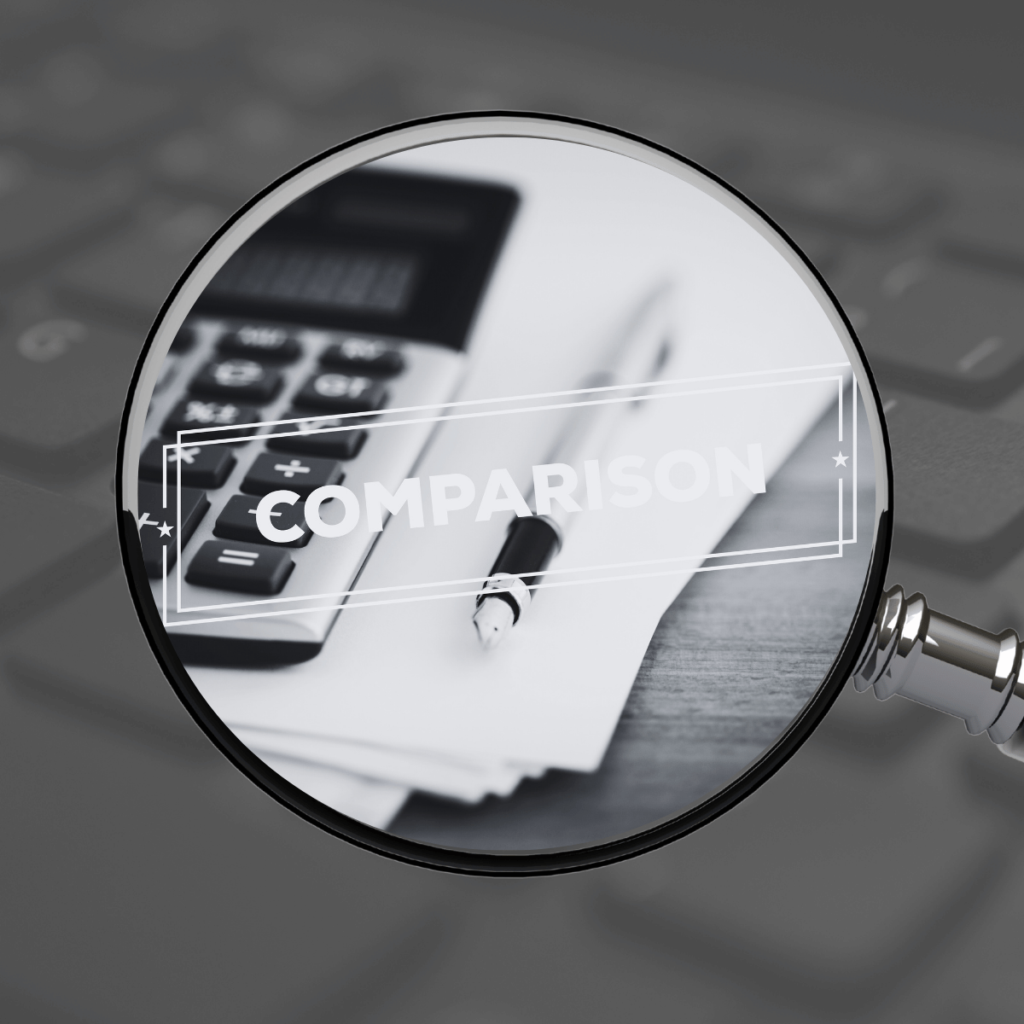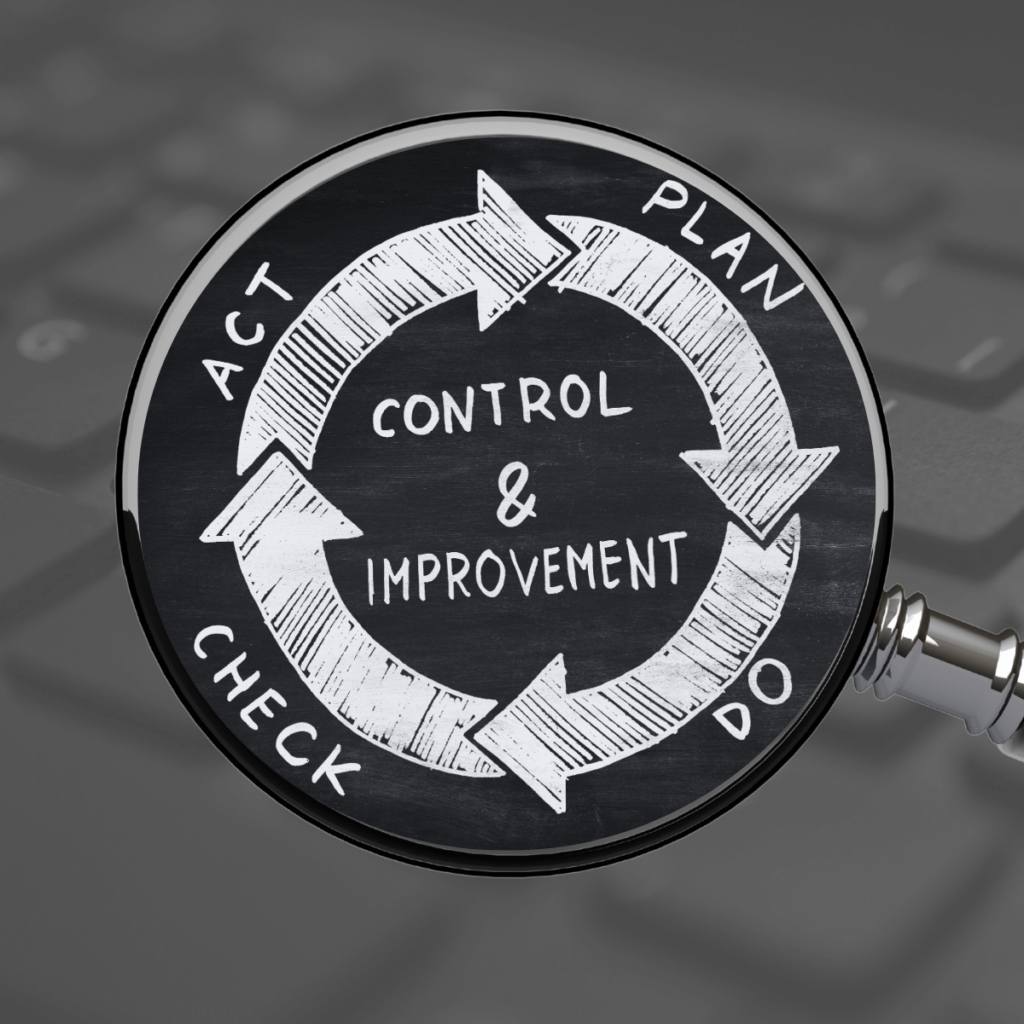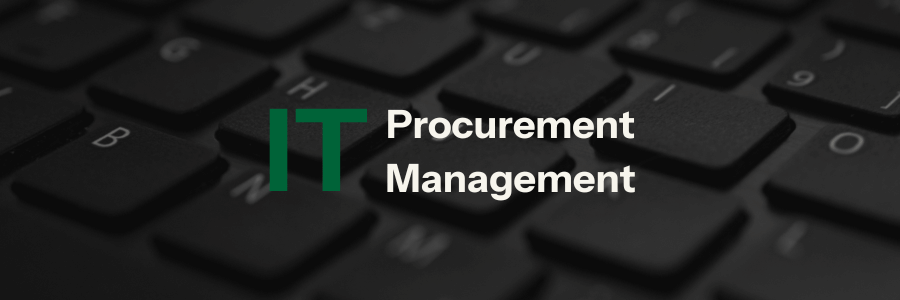Introduction
IT procurement plays a crucial role in business success, impacting efficiency, security, and compliance. Whether acquiring hardware, software, cloud services, or managed IT solutions, a structured procurement management process ensures technology investments align with business goals while mitigating risks and controlling costs.
A strategic IT procurement approach helps organizations optimize spending, reduce risks, and support long-term business objectives. Working with your IT provider for technology procurement can further enhance these benefits. For example, MIS Solutions has established vendor relationships, in-depth knowledge of industry trends, and expertise in identifying cost-effective solutions tailored to your business needs. We can help streamline decision-making, ensure seamless integration with existing systems, and provide ongoing support to maximize the value of your IT investments.
This guide outlines the entire process—from assessing needs to selecting potential vendors, negotiating contracts, and managing technology—providing you with the insights needed to make informed and cost-effective IT decisions.
What is IT Procurement? Definition and Core Components
IT procurement refers to the process of acquiring hardware, software, services, and infrastructure necessary for an organization’s operations. It involves identifying business needs, evaluating vendors, negotiating contracts, and ensuring that purchased solutions align with strategic goals. Beyond simply purchasing technology, IT procurement focuses on long-term value, risk management, and digital transformation.
Hardware encompasses essential devices like computers, servers, and networking equipment. Software includes licensing, cloud-based applications, and enterprise solutions. IT services cover managed IT support, consulting, and maintenance contracts, while infrastructure involves data centers, cloud platforms, and cybersecurity solutions.
Unlike tactical purchasing which is one-off hardware or software acquisitions designed to meet an immediate need, strategic procurement ensures that technology investments align with business objectives, offering scalability, cost efficiency, and long-term benefits.
IT procurement plays a pivotal role in digital transformation and helps organizations stay competitive. Businesses must invest in emerging technologies like cloud computing, AI-driven analytics, and cybersecurity solutions to improve productivity, automation, and customer experiences.
Effective IT procurement has a significant impact on business operations, ensuring efficiency, reducing downtime, and enabling seamless integration of new technologies. By prioritizing a strategic approach to procurement, organizations can gain a competitive advantage, reduce operational risks, and maximize ROI on technology investments.
Why IT Procurement Strategy Matters: Business Impact and ROI
While traditional procurement methods focus primarily on cost reduction, today’s procurement managers must balance multiple priorities, including security, compliance, and long-term value. Procurement teams are increasingly leveraging advanced procurement software to streamline these complex decisions and maintain healthy supplier relationships.
A well-planned IT procurement strategy is crucial for businesses to maximize ROI and avoid unnecessary spending. SMBs typically allocate 7-10 percent of revenue to IT, yet without a structured approach, they risk overspending, underutilizing technology, or exposing themselves to security and compliance issues. Instead of purchasing reactively, a strategic procurement process helps businesses control costs, manage risks, and align technology investments with long-term goals.
The evolution from traditional procurement to modern strategic sourcing has transformed how organizations approach technology acquisition. Forward-thinking procurement teams now:
- Develop comprehensive evaluation frameworks for potential suppliers
- Implement sophisticated procurement solutions for better decision-making
- Build and maintain strong supplier relationships for long-term value
- Use data-driven approaches to optimize spending and track ROI
This strategic transformation in procurement practices helps organizations:
- Reduce total cost of ownership for technology investments
- Improve vendor performance through structured relationship management
- Accelerate technology deployment through streamlined processes
- Enhance compliance and risk management capabilities
Cost Control and Budget Optimization
Procurement professionals can maximize IT value by going beyond simple price comparisons to analyze Total Cost of Ownership (TCO). Modern procurement solutions help teams track maintenance, support, and upgrade costs across the entire technology lifecycle. By leveraging enterprise agreements and maintaining strong supplier relationships, procurement managers can secure better pricing while ensuring reliable service delivery.
To optimize budgets effectively, procurement teams should focus on:
- License optimization strategies to prevent overspending on unused software solutions
- Volume pricing opportunities through consolidated supplier relationships
- Scalable pricing models that align with business growth
- Regular audits of existing procurement contracts to identify cost-saving opportunities
Traditional procurement approaches often miss hidden costs and long-term financial implications. Today’s procurement managers are increasingly adopting sophisticated procurement software to:
- Track spending patterns across different technology categories
- Identify opportunities for vendor consolidation
- Monitor license utilization and compliance
- Automate routine procurement tasks for greater efficiency
By taking a comprehensive approach to cost control, businesses can reduce IT expenses through strategic initiatives like:
- Rightsizing software licenses based on actual usage patterns
- Eliminating redundant subscriptions across departments
- Negotiating multi-year agreements with preferred suppliers
- Implementing automated spend management tools
This strategic approach to cost control helps organizations achieve sustainable savings while maintaining the quality and reliability of their technology investments.
Risk Management and Compliance
IT procurement processes must include vendor risk assessment, ensuring third-party providers maintain strong security measures. Businesses should evaluate vendor security posture, encryption standards, and compliance with regulatory requirements such as GDPR, HIPAA, or SOC 2. Contract risk management and business continuity planning help safeguard IT investments against vendor failures or cyber threats.
Strategic Technology Alignment
Aligning IT procurement with business strategy ensures technology investments drive growth rather than become obsolete. MIS Solutions’ customized technology roadmaps prevent short-term fixes that lead to unnecessary spending, while scalability considerations ensure technology solutions can grow with the business. Future-proofing strategies—such as adopting AI-driven automation and hybrid cloud architectures—help companies stay competitive. By taking a strategic approach, businesses can achieve long-term cost savings, reduce risk, and ensure IT investments drive meaningful business outcomes.
The IT Procurement Process: 6 Essential Steps
A structured IT procurement process helps organizations make informed technology investments that align with business goals, minimize risks, and maximize ROI. Following these six steps streamlines procurement, avoids common pitfalls, and ensures the best solutions for business needs.
Step 1: Technology Stack Assessment and Need Analysis

Before purchasing any new IT solution, organizations must first assess their current infrastructure to determine what is already in place and identify gaps that need to be filled. Conducting a gap analysis helps highlight inefficiencies, outdated systems, and areas where technology upgrades can drive business improvements.
Engaging key stakeholders—including IT teams, department heads, and end-users—ensures that procurement decisions address both technical requirements and business objectives. Documenting business requirements helps define the
must-have features, security considerations, compliance needs, and scalability expectations for any new technology.
Organizations should also establish a priority-setting framework to rank IT needs based on urgency, impact, and budget constraints. This structured approach prevents reactive or ad-hoc purchasing decisions that may not align with long-term goals.
Step 2: IT Market Research and Solution Identification

Once business needs are clearly defined, the next step is conducting market research to identify available solutions. This involves evaluating a wide range of products, vendors, and service providers to find the best fit.
A thorough solution comparison should include factors such as functionality, pricing, scalability, security, and vendor reputation. Businesses should also consider emerging technologies that may offer innovative alternatives to traditional IT solutions.
Looking at peer company benchmarking provides valuable insights into how similar businesses are leveraging technology to solve common challenges. Additionally, analyzing industry trends ensures that procurement decisions align with future technological advancements rather than investing in solutions that may become obsolete.
Step 3: IT Vendor Evaluation and Shortlisting

Selecting the right vendor is just as important as choosing the right technology. Experienced procurement teams have transformed traditional vendor vetting into a strategic operation that drives business value. Through sophisticated procurement operations, these teams develop comprehensive criteria for evaluating potential suppliers and monitoring vendor performance over time. Modern procurement software can streamline this evaluation process, enabling procurement professionals to compare and score prospective vendors with greater accuracy and efficiency.
Successful IT procurement strategies emphasize the importance of looking beyond initial cost proposals. When conducting vendor evaluations, procurement managers should assess financial stability, technical capabilities, and support infrastructure. This thorough approach to effective vendor management helps organizations identify partners who can scale with their business while maintaining compliance with terms and service level agreements.
The key to successful vendor shortlisting lies in balancing immediate requirements with long-term strategic fit. By incorporating a make-or-buy analysis early in the evaluation process, procurement teams can better determine whether external vendors or internal solutions best serve their organization’s needs. This strategic approach to supplier relationships helps ensure that selected vendors not only meet current requirements but can also support future growth initiatives.
Step 4: Vendor Proposal Analysis and Comparison

Once proposals are received, businesses need a structured approach to evaluate and compare them. A scoring methodology can be used to assign numerical values to key evaluation criteria, such as functionality, security, scalability, and support.
A feature comparison matrix helps visualize the differences between competing solutions, ensuring that critical requirements are met. Alongside feature evaluation, businesses should conduct a cost analysis, considering not just the upfront price but also long-term expenses such as licensing, maintenance, and support.
It’s also important to review the implementation timeline to ensure the vendor can meet business deadlines, as well as evaluate their support plan to confirm ongoing assistance and service quality.
Step 5: Implementation and Integration Planning for Installation

Once a contract is signed, the focus shifts to implementation. A project timeline should be developed to outline key phases, deliverables, and deadlines.
Allocating the right resources—including personnel, budget, and technical support—ensures a smooth deployment. Identifying integration requirements helps prevent compatibility issues with existing systems while assessing training needs ensures that employees can effectively use the new technology.
A well-defined communication plan helps manage expectations, keeping all
stakeholders informed about project progress, milestones, and potential roadblocks.
Step 6: Continuous Process Optimization

IT procurement should not be a one-time event. It requires ongoing refinement. Establishing a review cycle allows businesses to assess the effectiveness of previous procurement decisions and identify areas for improvement.
Creating a feedback loop ensures that input from users, IT teams, and business leaders informs future procurement strategies. Organizations should also implement process improvement methods, such as automating procurement workflows and leveraging analytics for better decision-making.
Updating procurement documentation helps keep records current and ensures that best practices evolve to meet new business and technology challenges. By continuously refining the procurement process, organizations can drive greater efficiency, cost savings, and innovation.
By following these nine steps, businesses can create a structured, strategic IT procurement process that minimizes risks, controls costs, and ensures long-term success.
Key Challenges in Enterprise IT Procurement
While IT procurement enhances efficiency and security, enterprises often face challenges like unauthorized technology adoption, budget overruns, and redundant systems. Addressing these issues strategically ensures a streamlined and effective procurement process.
Managing Shadow IT Risk
Shadow IT arises when employees use unapproved technology, creating security and compliance risks. To mitigate this, organizations should implement shadow IT identification via network monitoring and endpoint management. A risk assessment framework helps evaluate unauthorized solutions. Establishing IT policies and conducting employee education ensures adherence to procurement guidelines. Continuous monitoring and control measures help prevent security gaps.
Preventing Technology Stack Redundancy
Organizations often accumulate redundant technologies or licenses, leading to inefficiencies. Implementing technology inventory management ensures clear visibility into existing tools. MIS, for example, evaluates all licensing for each client monthly and goes a step further by providing a separate, detailed invoice just for licensing. In addition to offering complete transparency and insight into what licenses a client is paying for, it provides the opportunity to cut spending on those that are no longer needed.
Conducting integration assessments and feature overlap analyses helps identify redundant systems. Businesses should adopt consolidation strategies by standardizing vendors and eliminating underused software while optimizing licensing costs.
Cost Control and Budget Management
Maintaining financial oversight is critical in IT procurement. Using budget tracking methods like real-time expense monitoring enhances visibility. Cost allocation strategies improve accountability by assigning expenses to appropriate departments. Businesses should leverage vendor price negotiation and license optimization to minimize costs. Regular ROI measurement ensures IT investments deliver value and align with financial goals.
By proactively addressing these challenges, organizations can create a secure, cost-effective IT procurement strategy that supports business growth.
IT Procurement Best Practices for SMBs
For SMBs, IT procurement requires balancing cost, security, and scalability while aligning with business objectives. Limited resources make it essential to streamline decision-making, control costs, and mitigate risks through structured best practices.
Creating Effective Procurement Policies
Clear procurement policies prevent ad-hoc spending and enhance compliance. A policy framework should define purchasing guidelines, vendor preferences, and approval workflows. Establishing documentation requirements ensures transparency and informed future decisions. Compliance with industry regulations like GDPR and HIPAA is crucial, along with periodic policy reviews to adapt to evolving business needs.
Vendor Management Guidelines
Building strong vendor relationships secures better pricing and reliable support. Performance monitoring ensures prospective vendors meet SLAs and security standards. Maintaining clear communication protocols improves collaboration and issue resolution. Regular vendor reviews help assess ongoing value and make necessary adjustments.
Technology Evaluation Framework
A structured evaluation framework ensures technology aligns with business needs. Defining assessment criteria like functionality, security, and compliance helps standardize decisions. Scoring methodologies provide objective comparisons, while cost-benefit analysis weighs long-term value. Prioritizing future scalability ensures investments grow with the business, reducing costly replacements.
By implementing these best practices, SMBs can refine their IT procurement process, enhance cost efficiency, and drive long-term business success.
Conclusions
A strategic IT procurement process is essential for businesses looking to maximize the value of their technology investments while minimizing risks and controlling costs. By following a structured approach, organizations can ensure that IT purchases align with business objectives, enhance operational efficiency, and support long-term growth.
Key Takeaways
- A well-defined IT procurement strategy delivers cost savings, risk reduction, and business alignment. Without a structured approach, businesses may face budget overruns, compliance issues, and inefficiencies.
- Assessing current IT infrastructure and business needs ensures that technology investments fill gaps and align with long-term goals rather than being reactive purchases.
- Vendor evaluation and due diligence are critical for selecting reliable, financially stable, and secure partners that can provide long-term value.
- Cost control and contract negotiation strategies help businesses optimize budgets, leverage volume discounts, and avoid hidden expenses.
- Continuous monitoring and optimization ensure that IT solutions continue to deliver value and evolve with changing business needs.
Next Steps for Implementation
- Review your current IT procurement process and identify gaps or inefficiencies.
- Develop or refine IT procurement policies to establish a structured, transparent approach.
- Conduct a technology stack audit to assess existing systems, identify redundancies, and plan for future investments.
- Engage key stakeholders to align IT purchasing decisions with overall business strategy.
- Implement vendor management best practices to build strong partnerships and ensure accountability.
- Monitor IT procurement performance using KPIs and periodic reviews to track ROI and improve processes over time.
By taking these steps, businesses can ensure that IT procurement decisions are strategic, cost-effective, and aligned with long-term growth and security objectives.
